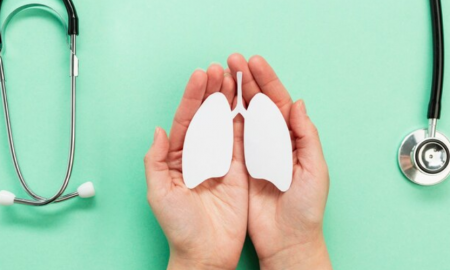
Crying: The Benefits on Mental Health

In a world that often champions stoicism and emotional restraint, shedding tears is sometimes dismissed as a sign of vulnerability. However, science and psychology are shedding light on the deep-rooted benefits of crying, particularly regarding mental health.
Far from a sign of weakness, tears serve as a natural and powerful outlet for emotional well-being, offering profound advantages for our psychological equilibrium.
The Physiology of Tears
Tears are not solely born from sadness or distress; they encompass a spectrum of emotions, from joy and frustration to relief and grief. Scientists have identified three primary types of tears: basal tears, which lubricate and protect the eye; reflex tears, triggered by irritants like chopping onions; and emotional tears, which spring from feelings and emotions.

Karolina Grabowska/ Pexels | Tears are not all the same
When emotional tears are shed, they contain higher levels of stress hormones, suggesting that crying serves as a physiological release mechanism. This natural expulsion of stress hormones through tears is a safety valve for our psychological well-being.
Stress Reduction and Mood Elevation
One of the most notable benefits of crying is its capacity to reduce stress and elevate mood. Emotional tears contain elevated levels of adrenocorticotropic hormone (ACTH) released during stress. Crying allows the body to purge excess stress hormones, leading to a sense of relief and relaxation.
Furthermore, the neurotransmitter called oxytocin, often called the “love hormone,” is also released during crying. Oxytocin is associated with bonding, social connection, and stress mitigation. Its presence in tears offers a biological explanation for the comfort and solace that often follows a good cry.

Fox/ Pexels | Tears are not only associated with sadness; they can also be tears of joy
Catharsis and Emotional Cleansing
Crying is often described as a form of catharsis, a psychological release that enables us to process and come to terms with our emotions. When we cry, we are essentially allowing ourselves to confront and navigate the complexities of our feelings, which can be remarkably therapeutic.
Suppressing emotions, on the other hand, can lead to emotional stagnation and internal turmoil. Crying acts as a means of cleansing, purging pent-up feelings, and allowing us to move forward with a clearer perspective.
Building Resilience and Coping
Crying is not a sign of fragility; it is a testament to our resilience and capacity to cope with life’s challenges. It takes courage to acknowledge our emotions and allow ourselves to feel vulnerable; this act of vulnerability is a powerful tool for growth.

Jack Sparrow/ Pexels | Throughout history, tears have been a subject of artistic exploration.
When we cry, we acknowledge our humanity and embrace our emotional spectrum. This self-compassion contributes to developing emotional intelligence and resilience, enabling us to navigate future challenges with a more adaptable and open mindset.
Enhancing Interpersonal Connections
Tears have a unique ability to foster connections between individuals. Our natural empathetic response is triggered when we witness someone’s tears. This shared emotional experience strengthens our bonds with others and encourages a sense of understanding and support.
Sharing our tears with loved ones can deepen relationships, communicating trust and authenticity. It invites others to reciprocate vulnerability, creating an environment of mutual emotional support and acceptance.
More in Mental Health
-
`
Amanda Bynes Pregnant at 13? Debunking the Rumors
In recent years, the internet has been ablaze with rumors surrounding former child star Amanda Bynes, particularly regarding allegations of a...
July 1, 2024 -
`
Can Baking Soda Clean Your Lungs?
Years of inhaling cigarette smoke, pollution, and other toxins can leave you longing for a way to cleanse your lungs. The...
June 27, 2024 -
`
How to Build Muscle Mass After 60? 5 Proven Strategies
Curious about how to build muscle mass after 60? You are not alone. And the good news is that it is...
June 20, 2024 -
`
Prediabetic Foods That Can Lower Your Blood Sugar in 2024
Prediabetes is a health condition characterized by blood sugar levels that are higher than normal but not high enough to be...
June 13, 2024 -
`
Kelly Clarkson’s Weight Loss Journey | Here Are the Details
Kelly Clarkson’s weight loss has been a hot topic among fans and media alike. The iconic American singer and host of...
June 3, 2024 -
`
Essential Vitamins for Gut Health – A Comprehensive Guide
Our gut does more than just digest food – it plays a vital role in immunity, mood, and overall health. But...
May 30, 2024 -
`
Looking to Build A Stronger Sculpted Back? Try Cable Back Workouts
Back workouts using cables, or cable back workouts as they are commonly known, have become the gold standard for anyone aiming...
May 22, 2024 -
`
How Much Water Should I Drink on Creatine? Hydration Tips
Creatine, a popular supplement among athletes and fitness enthusiasts, has gained widespread recognition for its ability to enhance muscle strength, power,...
May 17, 2024 -
`
What Is Bruce Willis’s Net Worth? Get the Inside Scoop Here!
Bruce Willis, the action hero who has saved the day countless times on screen, has built a legendary career. But how...
May 11, 2024















You must be logged in to post a comment Login